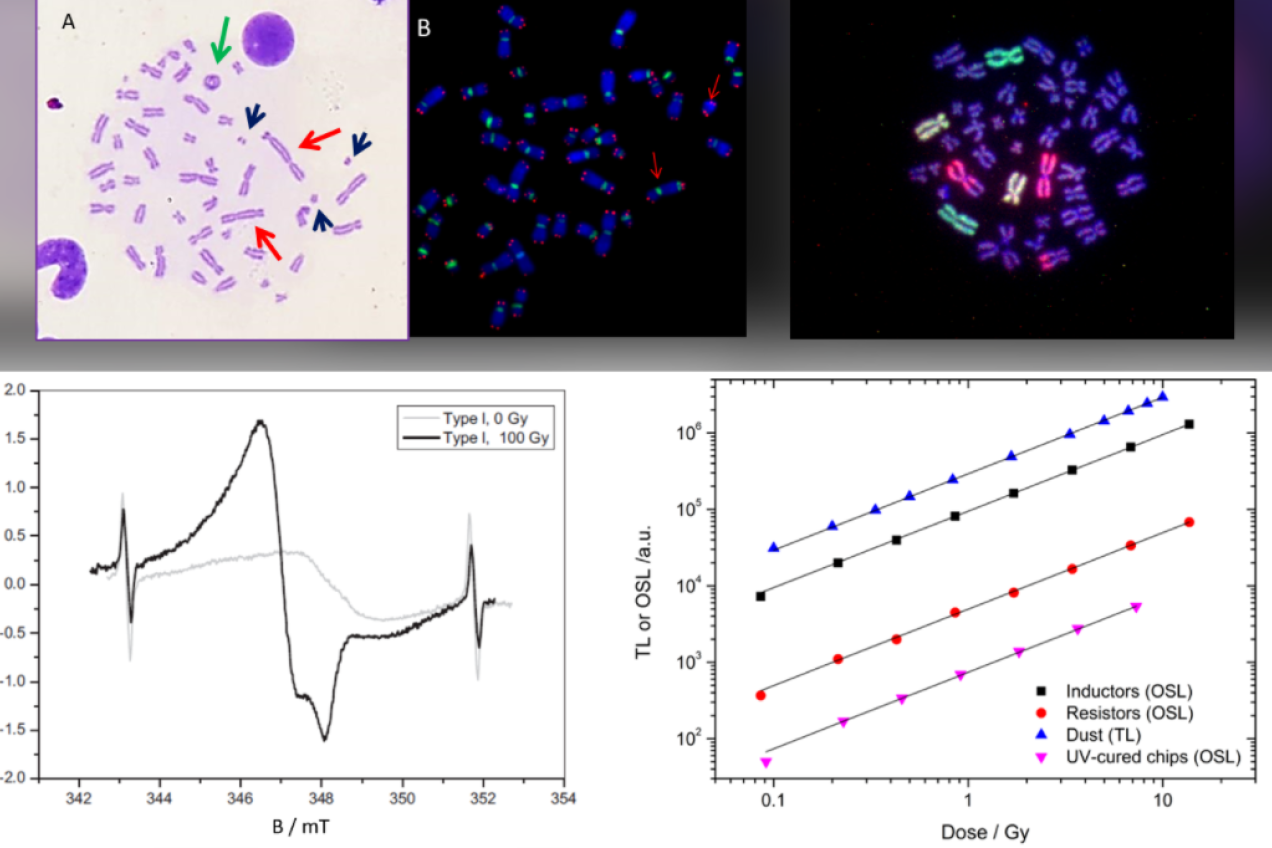6th EURADOS webinar: ICRU Report 94: Methods for Initial-Phase Assessment of Individual Doses of Ionizing Radiation
All information
Online - Starting time: 4:00 PM CEST
Overview
This webinar will present details of the recently published ICRU report 94, which resulted from a joint action between EURADOS and ICRU. Experts from EURADOS WG10 retrospective dosimetry together with international experts selected by ICRU worked together in the ICRU Report Committee.
The report describes dosimetry methods for use in dose assessment for individuals following acute exposure to radiation. The biodosimetry methods include the established techniques of dicentric chromosome assay, cytokinesis-block micronucleus assay, translocation analysis by fluorescent in-situ hybridization, premature chromosome condensation, and the γ-H2AX assay. Emerging techniques include RNA expression-based, protein-based, and metabolomic-based assays. Physical dosimetry methods include electron paramagnetic resonance and the luminescence-based techniques of thermoluminescence and optically stimulated luminescence. Electron paramagnetic resonance methods are used to assess absorbed dose in biologically derived materials, such as bone, teeth, and keratinous tissue, as well as non-biologically derived materials such as sugars, glasses, and polymeric materials used in fabrics and other personal items.
Thermoluminescence and optically stimulated luminescence techniques are used to assess absorbed dose in the components of personal electronics, along with other items such as plastic cards, fabrics, and clothing. There have also been similar efforts for teeth and dental repair ceramics. The report also discusses the complementary use of bioassays to distinguish between exposure to internal and external sources, neutron activation analysis in blood, hair, or other non-biological items, and radiation field mapping to determining locations where doses to individuals may be expected to be high.The Report concludes with a summary of the various methods and a brief discussion of the uses of such information in the aftermath of acute radiation exposure.
